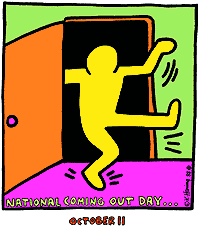 If you were diagnosed with breast cancer, how would you raise the issue at work? It’s a painful scenario to imagine, and yet it’s something thousands of cancer survivors have done, including two prominent television journalists.
If you were diagnosed with breast cancer, how would you raise the issue at work? It’s a painful scenario to imagine, and yet it’s something thousands of cancer survivors have done, including two prominent television journalists.
Linda Hurtado, a health reporter for WTFS in Tampa Bay, Florida, in a recent newscast tearfully announced she had breast cancer and would undergo a bilateral mastectomy to prevent its spread. On the air she poignantly grappled with bridging her personal journey with her professional work. She said:
I was diagnosed with breast cancer about two weeks ago… I’ve struggled since then with what I should say to all of you… How much to share, if I should share anything at all… And now I’m going to be gone for a while. I’m the health reporter, it’s breast cancer awareness month, and over the last 17 years I’ve asked so many of you to share your truth with me, so I can’t just disappear for a while without sharing mine with you.
She comes out in part to align her life with what she espouses in her work as a health reporter, and in part to deal with the practicality of her subsequent temporary absence.
In 2007, Good Morning America anchor Robin Roberts also came out at work with breast cancer. She shaved her hair on television so the world could witness the loss that can accompany the disease. In the video below, she relates:
When you’re first diagnosed, one of the first thoughts is about…the side effects of chemotherapy. And the one side effect that comes to mind, just like that, is one of the most visible: loss of hair.
There’s nothing to be ashamed about. It’s not like I’m trying to fool people by wearing the wig, because in the line of work that we are in, we don’t want to be distracting people from our story and what we’re talking about.
Roberts works openly with the public nature of her job in our lookist society. See the moving video for yourself:
Roberts and Hurtado are brave to reveal themselves so nakedly, and in doing so they help educate millions of people about the early detection and treatment of breast cancer. Even more important, they serve themselves by coming forth with their truth, and thus from a situation that weakens some physical capacity, they derive strength.
In fact, Robin Roberts’ video diary sent droves of viewers to ABCNews.com, a boon for the network.
So coming out at work can clearly be a win-win-win prospect for the world at large, your organization, and you.
Have you come out at work with breast cancer? How did you manage the experience?
Image via





